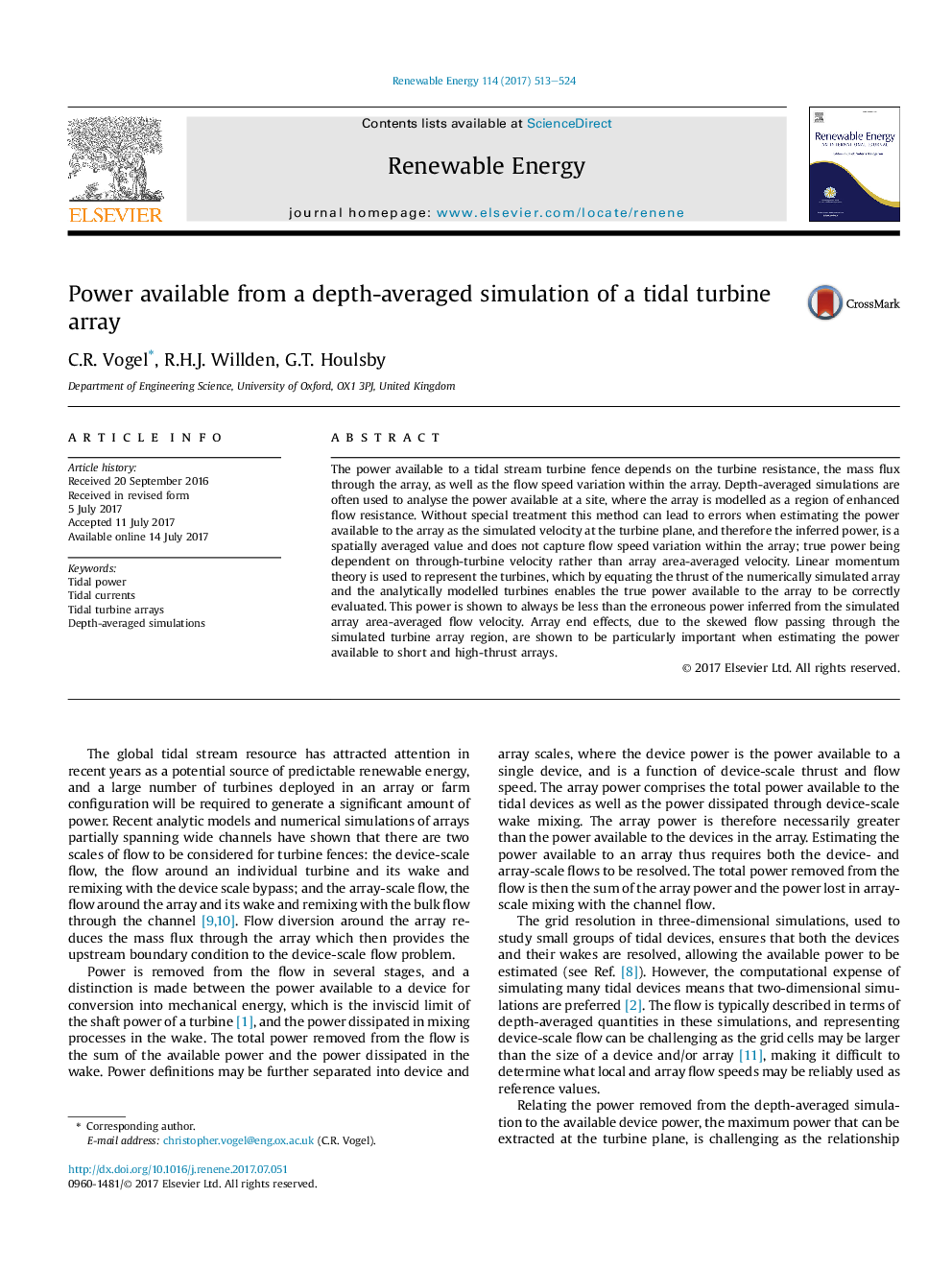ترجمه فارسی عنوان مقاله
قدرت از یک شبیه سازی عمق متوسط از یک آرایه توربین جزر و مد در دسترس است
عنوان انگلیسی
Power available from a depth-averaged simulation of a tidal turbine array
| کد مقاله | سال انتشار | تعداد صفحات مقاله انگلیسی |
|---|---|---|
| 137377 | 2017 | 12 صفحه PDF |
منبع

Publisher : Elsevier - Science Direct (الزویر - ساینس دایرکت)
Journal : Renewable Energy, Volume 114, Part B, December 2017, Pages 513-524
ترجمه کلمات کلیدی
قدرت جزر و مد، جریانهای جزر و مدی، آرایههای توربین جزر و مد، شبیه سازی عمق متوسط،
کلمات کلیدی انگلیسی
Tidal power; Tidal currents; Tidal turbine arrays; Depth-averaged simulations;
ترجمه چکیده
قدرت در دسترس برای یک حصار توربین نزول جریان وابسته به مقاومت توربین، جریان جرم از طریق آرایه و همچنین تغییر سرعت جریان در آرایه است. شبیه سازی عمق عمودی معمولا برای تجزیه و تحلیل قدرت موجود در یک سایت استفاده می شود، جایی که آرایه به عنوان یک منطقه از مقاومت جریان افزایش یافته است. بدون روش خاص، این روش می تواند هنگام برآورد قدرت موجود در آرایه به عنوان سرعت شبیه سازی شده در هواپیما توربین منجر به اشتباه شود، و بنابراین قدرت پیش بینی شده، یک مقدار متوسط محاسباتی است و تنوع سرعت جریان در آرایه را ضبط نمی کند؛ قدرت واقعی وابسته به سرعت توربین به جای سرعت آرام متوسط منطقه است. نظریه ی حرکت خطی برای نشان دادن توربین ها استفاده می شود که با محاسبه ی راندگی آرایه شبیه سازی عددی و توربین های مدل شده تحلیلی، توان واقعی موجود در آرایه را به درستی ارزیابی می کند. این قدرت نشان داده شده است که همیشه کمتر از قدرت اشتباه است که از جریان جریان متوسط به دست آمده در آرایه تقسیم شده است. اثرات انتهای آرایه به علت جریان انحرافی که از طریق منطقه آرایه توربین شبیه سازی شده عبور می کند، در هنگام برآورد قدرت موجود در آرایه های کوتاه و پرقدرت، بسیار مهم است.

